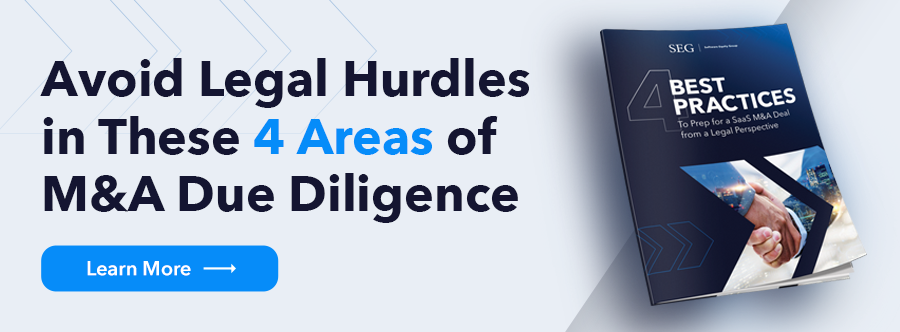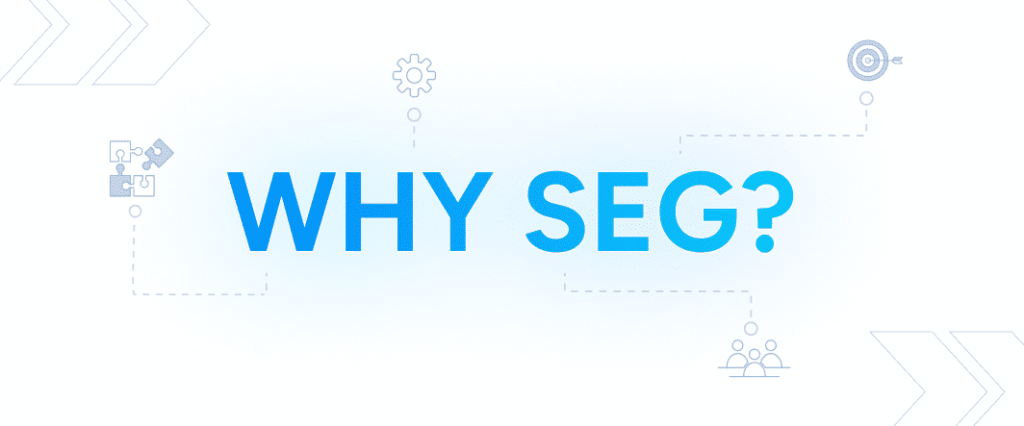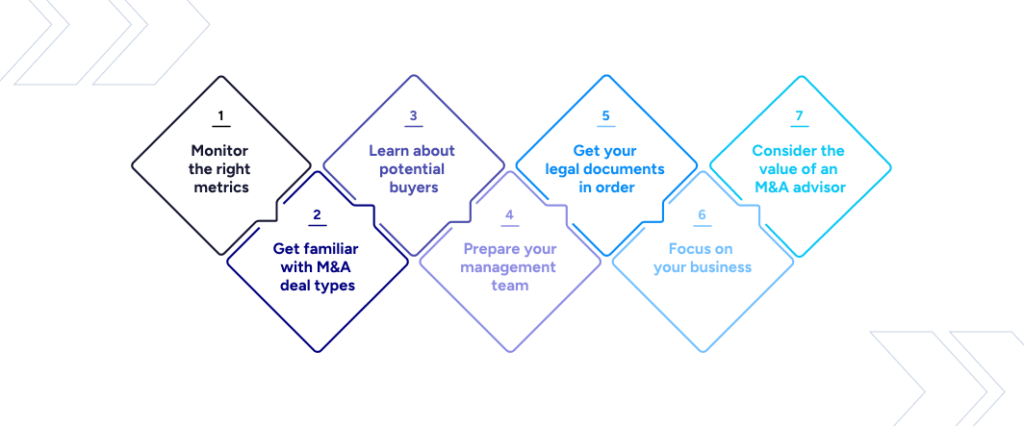- Company
Featured Resource
CLIENT STORYModern Message
To Real Estate
Giant RealPage
- Sectors
Featured Industry Report
EXPERT SERIESManufacturing Software
Report – Part 2
- Research
Featured Resource
FEATURED REPORTThe SEG 2024
Annual SaaS Report
- Tools
Featured Resource
WHITEPAPER20 Factors to Track When Valuing Your
SaaS Company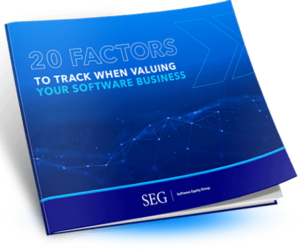
- Blog
How to Plan a Successful Exit Strategy

The SaaS industry is currently seeing rapid growth – a phenomenon that inherently attracts potential buyers and investors. According to Fortune Business Insights, the SaaS market is projected to reach $716.52 billion by the year 2028. With growth comes opportunity, and many SaaS founders and business owners are considering using this ballooning market to their advantage by pursuing an M&A event.
However, in many ways, an M&A event is almost as complex of a process as starting a business. Understanding the steps that go into successful M&As (and prioritizing the outcomes that matter most to you and your company) is key when planning a graceful and lucrative exit.
Understanding Exit Strategies
The first step when starting the M&A process is to identify and prioritize what a successful exit or liquidity event looks like for your particular business. Successful M&A events look different to different sellers. Some owners may want to raise private equity capital and remain involved in the business post-sale. Some may prefer to strike a deal with a strategic buyer and move on to their next venture. Whatever option looks most attractive to you, it’s important to position your company in a way that aligns with your ultimate M&A goals.
Most successful acquisitions don’t happen overnight. In fact, planning as far ahead as possible maximizes sellers’ chances of achieving ideal results. Although it may seem tempting to not involve personal goals in a business decision, overlooking the importance of your long-term life and career goals can be a mistake when planning for an exit or liquidity event. Being as clear as possible with post-M&A expectations and wishlists can help streamline the process and get the optimal outcome for all involved parties. Do you want to sail off into the sunset? Do you want to continue to be involved in the business post-M&A? How much do you want to sell for? These are all important considerations that should be thought out well ahead of actually starting the selling process.
Timing is always important, and it makes sense to strategize your exit around optimal macro or micro market conditions that can help increase overall valuations. Even if markets aren’t ideal, there are still plenty of options for positioning your company in an attractive way to investors. Determining what is important to you, your employees, your customers, your shareholders, and your product’s overall success is the best way to identify (and achieve) your M&A goals.
Planning for Your M&A Event
Once you have developed an exit plan, it’s time to start digging into data. Proving your company’s worth to potential buyers is typically done via metrics that showcase growth or profitability — both in the short-term and long-term. It’s not enough for your business to have a single strong year in a competitive marketplace. Instead, showing that your company has a sustainable business model through different economic conditions can make it an attractive prospect for buyers.
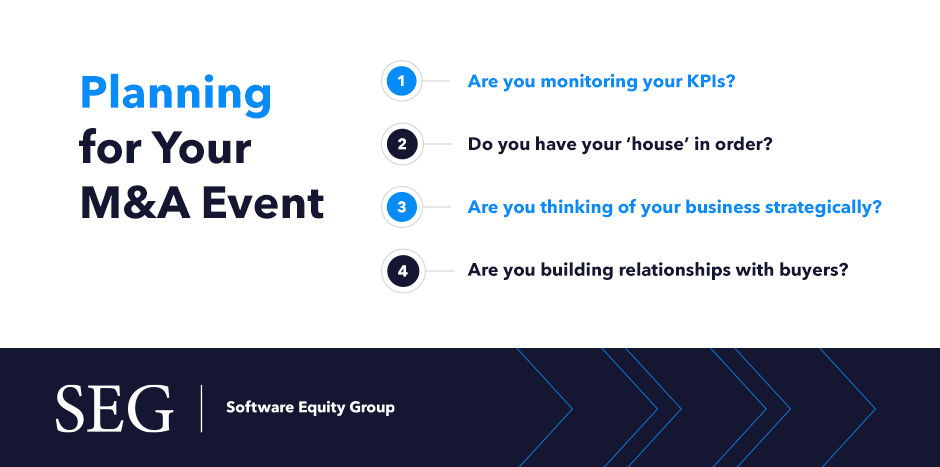
Are you monitoring your KPIs?
The best way to accomplish this goal is by gaining an intimate understanding of your company’s historical and current performance. Metrics are a great way to determine the financial health of a business and predict future revenue returns. One of the most important SaaS metrics to keep in mind is Monthly Recurring Revenue (MRR) or, if your SaaS model works off annual subscriptions, Annual Recurring Revenue (ARR).
Having a predictable source of revenue is one of the biggest attributes buyers look for when considering potential acquisitions. Along with ARR, other metrics SEG focuses on include Gross and Net Revenue Retention, LTV:CAC, and Rule of 40, to name a few. Optimizing key metrics before beginning the M&A process is the best strategy for achieving optimal results post-transaction.
Do you have the right documents order?
Like real estate sales, putting time into housekeeping tasks earlier rather than later also helps increase valuations and lessens the work that needs to be done when buyers are finally in the picture. This is your company’s opportunity to put its best foot forward before even having investors walk through your metaphorical door.
There are several key things to think about when preparing for an M&A event:
- Does your business have all the right documentation ready for potential buyers?
- Are your company’s legal documents prepared in regard to your employees, taxes, customers, and tech stack?
- Is your business prepared from a tech standpoint?
- Are you tracking the right customer data points?
Are you thinking of your business strategically?
Similarly, having your business fundamentals down to a science allows you to differentiate your company from competitors. Intimately knowing what value your competitors are offering customers can help you position your business in an advantageous way. Also, understanding the Total Addressable Market (TAM) and Serviceable Available Market (SAM) in your industry can help set appropriate expectations for potential valuations. If these markets aren’t large enough, it’s possible there will be added pressure on your valuation. A solid grasp of fundamentals will help your business become defensible and will showcase its best qualities to investors.
Are you building relationships with buyers?
A final element to consider for your exit strategy is developing relationships with buyers and investors before even starting the M&A process. Some important questions to think about include:
What are you doing to let potential buyers know your company exists?
How are you cultivating relationships with buyers right now?
Do you have a “Top 10” list of potential buyers?
Having a list of your ten ideal buyers can help focus your efforts when it comes to networking and positioning your company. Keep track of how acquisitive your top 10 buyers are and the overall fit. If creating a deal seems particularly interesting with one or two of them, consider reaching out under the guise of a partnership. Getting on these investors’ radar early can help increase your chances of achieving optimal M&A event outcomes.
When it comes down to it, showing that your SaaS business is competitively positioned in the market and has the potential for long-term profitability will help increase buyer interest (as well as the likelihood of higher purchase offers). Spreading awareness of your company’s success and networking with the right buyers and investors can also heighten your chances of achieving a great outcome.
The Benefits of a Well-Executed Exit Strategy
The benefits of having a solid exit strategy for any SaaS business owner are worth the extra hassle of planning early and measuring company performance consistently. On a personal level, including a plan that accounts for executive compensation can ensure any investments you’ve put into the company are paid out upon your exit. Similarly, writing provisions that account for all co-founders from the get-go can help ensure there are no last-minute disputes or financial surprises in store.
Similarly, well-planned M&A strategies can also make life easier for employees caught in the lurch of the transaction. Rather than creating internal chaos, offering prospective buyers a clear succession plan can help ease the transition for both new owners and existing employees alike. Such moves also show workers that the acquisition doesn’t have to be seen as a negative thing and can open doors to new growth opportunities.
A final point to consider is the team you have in place to help implement your exit strategy. There are several benefits to consulting with a professional on a potential M&A event:
- Get an outside perspective on your company’s performance and value propositions.
- Receive recommendations on the metrics that can best help improve your valuation.
- Glean expert insight into the housekeeping tasks that need to be completed before the event.
Ultimately, it’s important to think about your M&A event as a journey rather than a single, one-off transaction. Good purchases take time to make, and the same goes for buyers interested in your SaaS business.
If a liquidity event or acquisition sounds attractive to you, it’s never too early to start planning. At SEG, we help SaaS executives create an exit strategy that’s right for themselves and their company. Reach out to schedule a consultation with us today.

